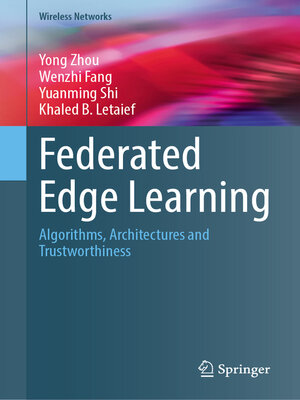Federated Edge Learning
ebook ∣ Algorithms, Architectures and Trustworthiness · Wireless Networks
By Yong Zhou

Sign up to save your library
With an OverDrive account, you can save your favorite libraries for at-a-glance information about availability. Find out more about OverDrive accounts.
Find this title in Libby, the library reading app by OverDrive.



Search for a digital library with this title
Title found at these libraries:
| Library Name | Distance |
|---|---|
| Loading... |
This book presents various effective schemes from the perspectives of algorithms, architectures, privacy, and security to enable scalable and trustworthy Federated Edge Learning (FEEL). From the algorithmic perspective, the authors elaborate various federated optimization algorithms, including zeroth-order, first-order, and second-order methods. There is a specific emphasis on presenting provable convergence analysis to illustrate the impact of learning and wireless communication parameters. The convergence rate, computation complexity and communication overhead of the federated zeroth/first/second-order algorithms over wireless networks are elaborated.
From the networking architecture perspective, the authors illustrate how the critical challenges of FEEL can be addressed by exploiting different architectures and designing effective communication schemes. Specifically, the communication straggler issue of FEEL can be mitigated by utilizing reconfigurable intelligent surface and unmanned aerial vehicle to reconfigure the propagation environment, while over-the-air computation is utilized to support ultra-fast model aggregation for FEEL by exploiting the waveform superposition property. Additionally, the multi-cell architecture presents a feasible solution for collaborative FEEL training among multiple cells. Finally, the authors discuss the challenges of FEEL from the privacy and security perspective, followed by presenting effective communication schemes that can achieve differentially private model aggregation and Byzantine-resilient model aggregation to achieve trustworthy FEEL.
This book is designed for researchers and professionals whose focus is wireless communications. Advanced-level students majoring in computer science and electrical engineering will also find this book useful as a reference.







